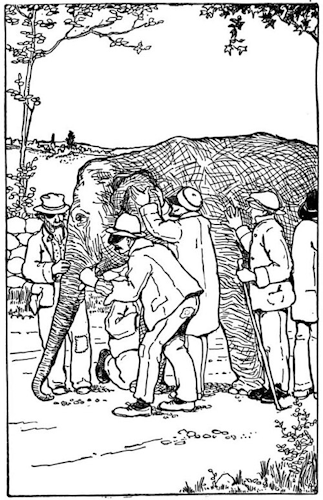The Blind Men & The Elephant
Illustrates Siloed Thinking, Need for Shared Understanding
The classic parable of The Blind Men and the Elephant1 describes a group of blind men who each examine a different part of the elephant, its side, trunk, tail, ear, and so on. Because each man only experiences a piece of the animal, they each come away describing something completely different (e.g., “It's like a wall,” “It's like a rope,” “It's like a tree trunk”). Their partial viewpoints lead to disagreement about what the “elephant” really is.

Six blind men from Indostan had never encountered an elephant before. Eager to understand what an elephant was like, they each approached the animal and examined it by touch, since none could see.
- The first blind man felt the side of the elephant and said, “An elephant is like a wall.”
- The second touched the tusk and concluded, “It is like a spear.”
- The third, grabbing the trunk, said, “It's like a snake.”
- The fourth placed his hand around the leg and declared, “Clearly, an elephant is like a tree.”
- The fifth, feeling the ear, said, “An elephant is like a fan.”
- The sixth grasped the tail and exclaimed, “Why, it's just like a rope!”
Afterward, they began to argue. Each was convinced that he alone was correct, and none could understand how the others could be so wrong. They failed to listen to one another or combine their insights.
Lessons Learned
Partial Knowledge and Specialized Roles
In many Agile teams, individuals have specialized skill sets or focus areas, developers may focus on backend logic, testers on quality, Product Owners on requirements, and so forth. Much like the blind men, each team member “touches” only a portion of the overall product or system. If each person relies solely on their own perspective, the team may form an incomplete or distorted view of the product, business needs, or customer experience.
Importance of Cross-Functional Collaboration
Agile emphasizes cross-functional teams where everyone collaborates closely. If we remain siloed (like the blind men each encountering just one aspect), we risk misunderstanding the bigger picture. Cross-functional communication, through Daily Scrums, Sprint Reviews, and Retrospectives, helps bring these perspectives together. When everyone shares what they see and know, the team develops a collective understanding of the “elephant.”
Building a Holistic Vision
Each blind man in the parable thinks he has the definitive truth. In reality, each only has part of it. Similarly, Product Owners, developers, UX designers, and stakeholders each hold vital information. Agile events (e.g., Sprint Planning, refinements) are designed to merge these viewpoints into a common vision of the product. The more we integrate diverse inputs, the more accurate and unified our vision becomes.
Avoiding Internal Conflicts Through Shared Understanding
In the parable, the blind men argue. Their conflict arises because they believe that anyone else's different perspective must be incorrect. In Agile settings, conflict can occur when one group assumes they know the “right” approach without considering other areas (technology constraints, business realities, UX best practices, etc.). Regular communication and transparency foster a culture of respect for each viewpoint and reduce friction.
Continuous Learning and Adaptation
Agile teams are encouraged to experiment, learn, and adapt. Even if we start with only partial knowledge (as in early Sprints), we continuously refine our understanding with each iteration. By reviewing what's been delivered and listening to stakeholder feedback, teams expand their understanding of the “elephant” incrementally, embracing that initial perspectives will evolve over time.
Systems Thinking
A key Agile principle is to think about the system as a whole rather than optimizing only for one part. Just as each blind man's view would have been inadequate by itself, optimizing only for your piece of the solution might harm the overall product or user experience. Agile encourages a Systems Thinking approach, ensuring that local optimizations don't jeopardize the broader goal.
Coaching Tips
- Facilitate Conversations and Knowledge Sharing: Encourage team members to demo their work in a way that educates others about their area, bridging gaps in understanding.
- Use Visual and Collaborative Tools: Sometimes, “seeing” the whole elephant is easier when we visualize workflows, architecture, or user journeys together. Tools like whiteboards, diagrams, or Kanban boards can keep the whole picture in front of everyone.
- Promote Empathy and Respect: Remind the team that each person's perspective is partial. Acknowledge that everyone brings unique expertise, and that none of us can see everything alone.
- Align on Shared Goals: Align the team around common objectives and metrics (e.g., customer satisfaction, product quality). When the team focuses on a common outcome, it naturally reduces the likelihood of siloed, narrow perspectives.
By reminding people of The Blind Men and the Elephant, you underscore that while individual expertise is valuable, no single perspective gives the full picture. Agile organizations thrive when they integrate diverse viewpoints into a cohesive understanding, enabling teams to deliver the right product, for the right reasons, together.


